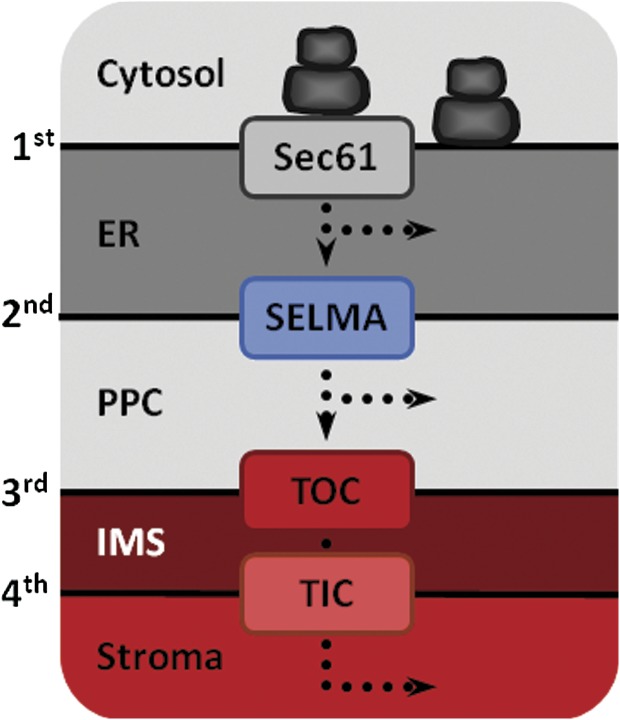FIG. 1.—
Plastid architecture of stramenopiles and haptophytes. The secondary plastids of, for example, Phaeodactylum tricornutum and Emiliania huxleyi both have the same membrane organization. They are surrounded by four membranes with the outermost one being contiguous to the ER. Plastid proteins presumably cross the 1st, 2nd, 3rd, and 4th membrane by Sec61, SELMA (investigated in this study), TOC, and TIC translocons, respectively. IMS, intermembrane space.

